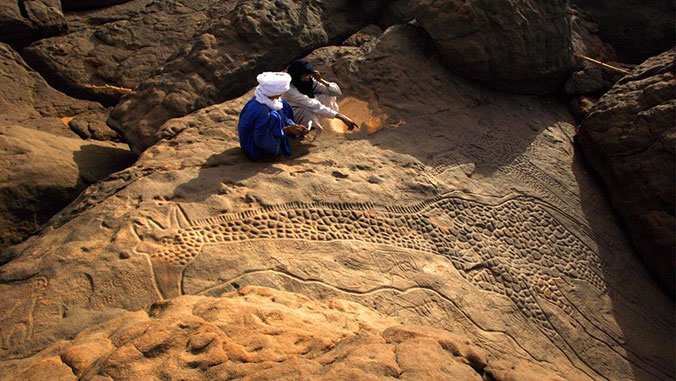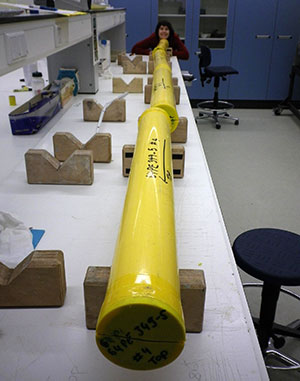
Large parts of the Sahara Desert were green thousands of years ago, evidenced by prehistoric engravings in the desert of giraffes, crocodiles and a stone-age cave painting of humans swimming. Recently, more detailed insights were gained from a combination of sediment cores extracted from the Mediterranean Sea and results from climate computer modeling, which an international research team, including University of Hawaiʻi at Mānoa oceanography researcher Tobias Friedrich, examined for the first time.
The layers of the seafloor tell the story of major environmental changes in North Africa over the past 160,000 years. The study, co-authored by Friedrich and led by Cécile Blanchet of the German Research Centre for Geosciences GFZ, was published in Nature Geoscience.
Climatic context for past populations

Together with the GEOMAR Helmholtz Centre for Ocean Research Kiel, a team of scientists organized a research cruise to the Libyan Gulf of Sirte.
"We suspected that when the Sahara Desert was green, the rivers that are presently dry would have been active and would have brought particles into the Gulf of Sirte," said Blanchet.
Analyzing such sediments would help to better understand the timing and circumstances for the reactivation of these rivers and provide a climatic context for the development of past human populations.
Using a method called piston coring, the scientists pressed giant cylinders into the seafloor and were able to recover nearly 30-foot long columns of marine mud.
The layers of mud contain sediment particles and plant remains transported from the nearby African continent, as well as shells of microorganisms that grew in seawater, telling the story of climatic changes in the past.
"By combining the sediment analyses with results from our computer simulation, we can now precisely understand the climatic processes at work to explain the drastic changes in North African environments over the past 160,000 years," said Friedrich.
Climate change can prompt migrations
From previous work, it was already known that several rivers episodically flowed across the region, which today is one of the driest areas on Earth. The team's unprecedented reconstruction continuously covers the last 160,000 years. It offers a comprehensive picture of when and why there was sufficient rainfall in the Central Sahara to reactivate these rivers.
"We found that it is the slight changes in the Earth's orbit and the waxing and waning of polar ice sheets that paced the alternation of humid phases with high precipitation and long periods of almost complete aridity," explained Blanchet.
The fertile periods generally lasted five thousand years and humidity spread over North Africa up to the Mediterranean coast. For the people of that time, this resulted in drastic changes in living conditions, which probably led to large migratory movements in North Africa.
This work is an example of UH Mānoa's goal of Excellence in Research: Advancing the Research and Creative Work Enterprise (PDF), one of four goals identified in the 2015–25 Strategic Plan (PDF), updated in December 2020.






